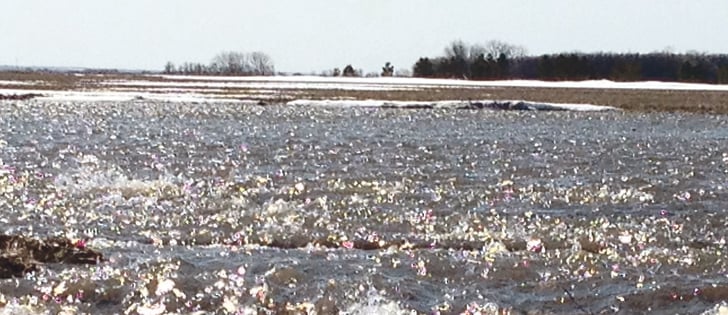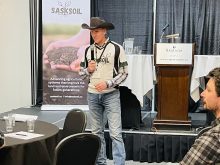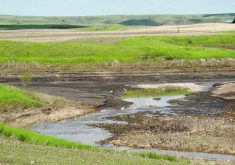People are still scratching their heads over Ottawa’s planned cancellation of the successful, eight-decades-old federal community pasture program.
Today, when the profitability of beef production is questioned and the ecological value of grazing is misunderstood, the pastures’ benefits stand firm.
For every $1 spent, the pastures don’t only grow beef. They also generate $2.50 in research, carbon sequestration, watershed protection, specific habitat for species at risk and 12 other documented public benefits.
Their 2.7 percent of prairie has been called Canada’s grassland jewel. Some large ranches, having survived climate and market pressures, also deserve this accolade.
Read Also

Proactive approach best bet with looming catastrophes
The Pan-Canadian Action Plan on African swine fever has been developed to avoid the worst case scenario — a total loss ofmarket access.
The Saskatchewan government did not ask for this pasture challenge and needs our help.
Leasing or selling publicly owned land to a select few is consistent with the conservative view that private owners best manage resources. Obviously, private enterprise is a key to creating wealth, but responsible governance needs to think beyond today. Should we not look beyond mere “price” and protect ongoing “value?”
What do the economics suggest?
The community pastures are especially attractive for mixed and young farmers. A grain farming family’s small herd went to the federal pasture after calving and before the grain-related workload peaked. In fall ,the cows came home to clean up grain fields, eat non-marketable grain and graze hilly or flooded land.
This integrated approach to ecology, land, time and economics contributed significantly to farm diversification and income. However, it was apparently poorly understood in Ottawa. Does it also need explanation in Regina?
One producer has calculated an annual profit of $125 per cow-calf pair under the existing federal community pasture system, compared to a $40 loss for purchased community pasture land.
It would cost patrons of one large pasture six times more annually to buy it than to lease it from the federal government.
Lease rates offered by the province aren’t as dire but also result in lost profit. As well, patrons would prefer spending their money on improving herds or making value-added improvements rather than acquiring land.
Given these economics, it is not surprising that patrons of the first 10 pastures offered for sale are unenthusiastic. One group has already decided to sell their herds. The majority needs more time to plan well and resolve uncertainties associated with the provincial lease offer, such as decommissioning water wells and maintaining breeding bulls.
Some producers may find creative ways to make things work on some pastures, such as substantially increasing stocking rates and reducing grass diversity and drought resistance. But who would monitor oil, gas and gravel extraction? Although it would put substantial royalties into provincial coffers, it would also result in the loss of the above-mentioned public benefits without management.
What is the solution? If wisdom and democracy are lost in Ottawa, then let’s have a Saskatchewan community pasture program.
The Manitoba government continues to balance the public and private costs and benefits, while Alberta manages grazing and public benefits through the Special Areas Board. The United States does something similar with its Bureau of Land Management.
Most Saskatchewan patrons, conservationists and hunters would prefer such an arrangement to continue. Having up to 60 volunteer board bosses manage a pasture from afar has been described as “a rodeo.”
The Saskatchewan government offers patrons the right of first refusal to buy or lease. If patrons decline, will the pastures be sold to other interests, even offshore interests? What would this mean for the livestock industry in Saskatchewan? And what would it mean for our rural communities?
Katherine Arbuthnott is a professor and assistant dean at the University of Regina’s Campion College, with research in conservation psychology. Joe Schmutz is an adjunct professor in the University of Saskatchewan’s School of Environment and Sustain-ability, with research in grassland ecology.

















